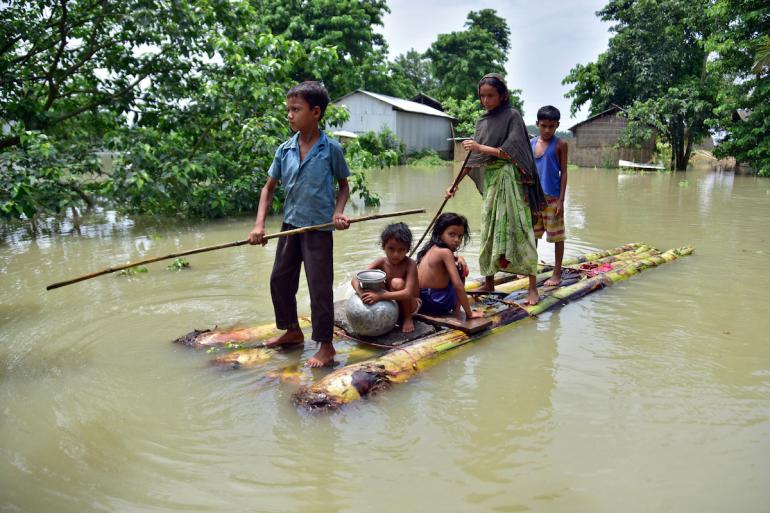Floods in India, Nepal displace nearly four million people, at least 189 dead

Nearly four million people in India’s northeastern state of Assam and neighboring Nepal have been displaced by heavy flooding from monsoon rains, with dozens missing as deaths rose to at least 189, government officials said on July 19.
The overflowing Brahmaputra River, which flows through China’s Tibet, India and Bangladesh, has damaged crops and triggered mudslides, displacing millions of people, officials said.
More than 2.75 million people in Assam have been displaced by three waves of floods since late May that has claimed 79 lives after two more deaths were reported overnight, a state government official said.
“The flood situation remains critical with most of the rivers flowing menacingly above the danger mark,” Assam water resources Minister Keshab Mahanta told Reuters.
Assam is facing the twin challenge of combating floods and the coronavirus pandemic. Out of 33 districts, 25 remained affected after the current wave of flooding, beginning a fortnight ago.
India is grappling with the novel coronavirus, which has infected nearly 1.1 million people and 26,816 have died from the COVID-19 disease, government data showed on July 19.
In neighboring Nepal, the government asked residents along its southern plains on July 17 to remain alert as heavy monsoon rains were expected to pound the Himalayan nation where more than 100 have died in floods and landslides since June, officials said.
Some 110 people were killed and another 100 injured as landslides and flash floods washed or swept away homes, upended roads and bridges and displaced hundreds of others in 26 of the country’s 77 districts, police said. - LiCAS.news
Radio Veritas Asia (RVA), a media platform of the Catholic Church, aims to share Christ. RVA started in 1969 as a continental Catholic radio station to serve Asian countries in their respective local language, thus earning the tag “the Voice of Asian Christianity.” Responding to the emerging context, RVA embraced media platforms to connect with the global Asian audience via its 21 language websites and various social media platforms.













